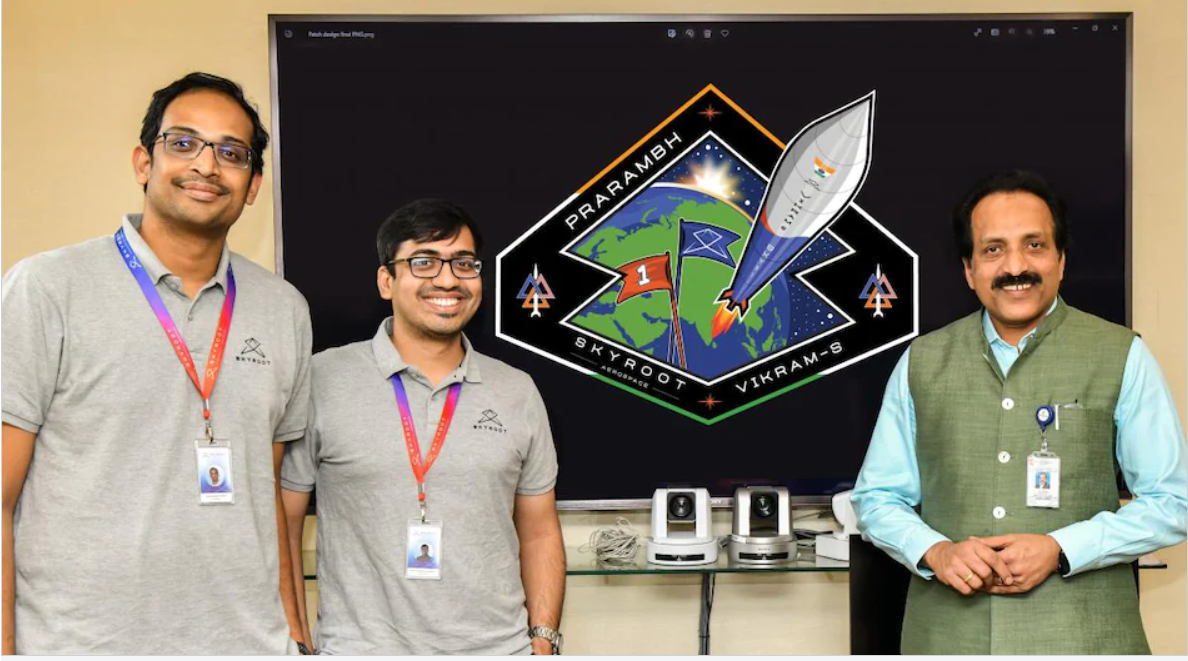News Highlight
India’s first privately developed rocket Vikram-S is poised to create history as it undergoes final launch preparations at the ISRO’s launchpad in Sriharikota for launch between November 12-16.
Key Takeaway
- The Prarambh mission and the Vikram-S rocket were developed by the Hyderabad-based startup with extensive support from ISRO and IN-SPACe (Indian National Space Promotion and Authorisation Centre).
- The mission ‘Prarambh’, meaning ‘the beginning’, since it is the first mission for Skyroot.
- Skyroot’s launch vehicles are named ‘Vikram’ as a tribute to the founder of the Indian Space programme and renowned scientist Vikram Sarabhai.
- The space sector was opened up to facilitate private sector participation in 2020.
- In 2021, Skyroot became the first space technology startup to ink an MoU with ISRO for sharing facilities and expertise.
Vikram-S and Prarambh space mission
- Vikram-S is India’s first privately developed rocket and is all set to be launched as part of the Prarambh space mission.
- Vikram-S is set for a launch in a sub-orbital mission with three payloads between November 12 and 16.
- The Prarambh mission is a single-stage sub-orbital launch vehicle aimed at carrying three payloads into space, including a 2.5-kilogram payload that has been developed by students from several countries.
Sub-orbital flight
Sub-orbital flight are those vehicles which are travelling slower than the orbital velocity – meaning it is fast enough to reach outer space but not fast enough to stay in an orbit around the Earth.
IN SPACe
- IN – SPACe is an organisation under the Department of Space of the Government of India.
- The Centre will act as a facilitator and regulator of space activities in India.
- Features of IN – SPACe
- It is a single-window nodal agency that will permit and oversee Space activities including building of launch vehicles and satellites
- It will also monitor the manufacturing, operation and control of spacecraft for registration as Indian Satellite and all the associated infrastructure for the same.
- Through IN-SPACe, Non-Governmental-Private-Entities (NGPEs) will have access to technology, expertise, and facilities free, or at reasonable rates.
- There will be an online portal of the facility for tracking the progress of applications made by private parties.
- In addition, ISRO will identify areas of technology that industries can utilise to develop new products.
Significance of IN-SPACe
- When the government and private space sectors collaborate, better and broader opportunities for growth and employment are created.
- Other companies, in addition to ISRO, will be able to present their ideas for space missions, and a collaborative effort will level the playing field for all companies
- More ideas and visions will be generated as more people work to improve the space programme
- This will ultimately result in better utilisation of the resources provided for the various missions.
- With IN-SAPCe, the Indian space program is expected to reach newer heights with more involvement of scientists and researchers.
- Scientists and researchers from both the ISRO and the private sector will have more time to work on new developments and exploration in previously untested areas.
Pic Courtesy: Business Standard
Content Source: The Hindu



